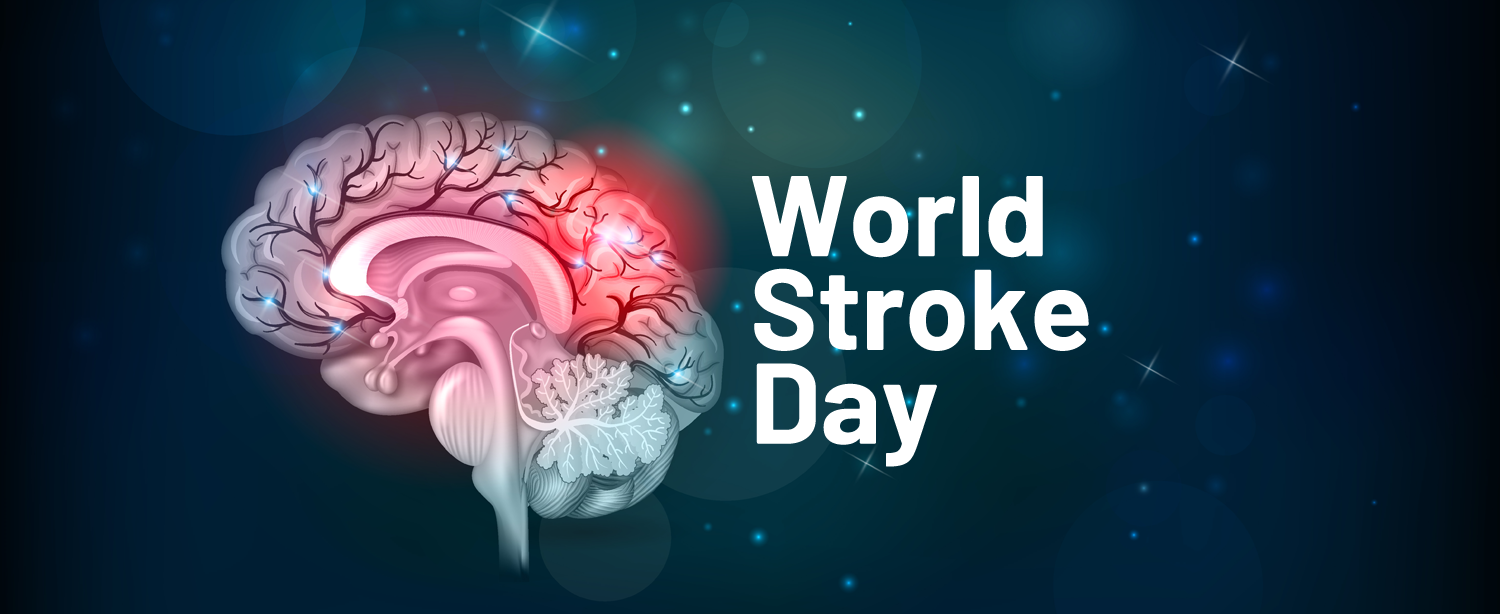A stroke occurs when a blood vessel in the brain ruptures and bleeds, or when there’s a blockage in the blood supply to the brain. The rupture or blockage prevents blood and oxygen from reaching the brain’s tissues. Without oxygen, brain cells and tissue become damaged and begin to die within minutes. Every year, approximately 1.8 million people suffer from stroke, which is the second most common cause of death after coronary artery disease (CAD) globally. Stroke is the second commonest cause of death in India. Nearly one stroke case is reported every 40 seconds and one stroke death every four minutes in India. Amongst survivors, stroke is also the most prevalent cause of chronic adult disability.
Symptoms of Stroke
If you or a loved one is having a stroke, seek immediate medical help. When it comes to a stroke, time lost is brain lost. The more time that passes between the onset of a stroke and treatment, the more likely that brain functions are permanently lost.
Remember FAST if you spot a stroke:
- Face drooping
- Arm weakness
- Speech difficulty
- Time to call emergency services
Some of the additional signs and symptoms of a stroke may include:
- Sudden numbness or weakness of face, arm, or leg, especially on one side of the body.
- Sudden confusion, trouble speaking or understanding speech.
- Sudden trouble seeing in one or both eyes.
- Sudden trouble walking, dizziness, loss of balance or coordination.
- Sudden severe headache with no known cause.
The prognosis and recovery for a person that has suffered a stroke depend upon the location of the injury to the brain.
Types of Stroke
The type of stroke you have affects your treatment and recovery. The three main types of stroke are:
- Ischemic stroke – An ischemic stroke happens when blood flow through the artery that supplies oxygen-rich blood to the brain becomes blocked.
- Hemorrhagic stroke – A hemorrhagic stroke happens when an artery in the brain leaks blood or ruptures. The leaked blood puts too much pressure on brain cells, which damages them.
- Transient Ischemic Attack (TIA) – A transient ischemic attack (TIA) is sometimes called a “mini-stroke.” The blood flow to the brain is blocked for only a short time—usually no more than 5 minutes.Recognizing and treating TIAs can lower the risk of a major stroke.
Stroke prevention
Some stroke risk factors can’t be controlled. These include gender, age, and family history. However, up to 80 percent of strokes can be prevented with healthy lifestyle changes and controlling your health conditions. Here is what you must do to:
- High blood pressure: High blood pressure is a leading cause of stroke and almost half of adults suffer from it. Get yours checked regularly.
- Diabetes: High blood sugar damages your blood vessels, control your diabetes levels with medicine and lifestyle changes.
- Heart disease: Coronary artery disease or atrial fibrillation could contribute to stroke. Get treated for your heart condition.
- Abnormal cholesterol: When you take in more cholesterol than your body can use, it builds up, clogging arteries—including those in your brain. Control your cholesterol levels.
- Obesity: Being overweight or obese increases your risk for stroke as obesity is linked to high cholesterol and blood pressure.
- Unhealthy diet: Choosing healthy foods can help prevent stroke. Eat foods that are low in saturated fats, trans fat, and cholesterol. Have plenty of fruits and vegetables to increase your fibre intake.
- Not exercising: Regular exercise helps you stay at a healthy weight and can lower your cholesterol and blood pressure.
- Smoking: Cigarette contains toxic chemicals that damage your heart and blood vessels, which increases your risk for stroke. Quit smoking.
- Drinking alcohol: Drinking too much alcohol can raise your blood pressure, stay away from alcohol.
- Stress: Stress can contribute to high blood pressure. Learn to manage your stress better by practicing meditation, staying positive, listening to music or taking up a hobby you enjoy.
Advanced Stroke care
Stroke is one of the largest contributors to increasing health loss in India over the last 30 years. India needs a comprehensive approach for awareness amongst the masses, timely diagnosis, treatment and rehabilitation using advanced technologies and expertise.
Kokilaben Dhirubhai Ambani Hospital has established a comprehensive stroke care programme for the management of acute and chronic stroke patients. The Code Stroke Plan includes a stroke ambulance, emergency care services, neuro-imaging, neurological intensive care unit, neuro-intervention services, neurosurgical services, and a dedicated stroke unit. Our team offers comprehensive acute neurointervention services under a single roof. The Centre for Neurosciences has conducted over 875 brain surgeries for stroke in the past.
We offer a Stroke rehabilitation program that provides an optimal environment for recovery, functional improvement, and reduction in secondary complications and disability. The Multidisciplinary Team of specialists are equipped with these high-end technologies:
- Gait & Motion Analysis Laboratory
- Balance Assessment and Training System (BATS)
- Body-Weight Support Treadmill Gait Training System (BWSTT)
Kokilaben Dhirubhai Ambani Hospital (KDAH) is one of the only private hospitals in Mumbai and more so in Western India to have a comprehensive Level-1 Accident & Emergency Department (A&E) for patient care, training and research. The Trauma Centre is reputed to respond the fastest in times of a stroke. that ensures higher recovery chances. Please find below the link to our website:


